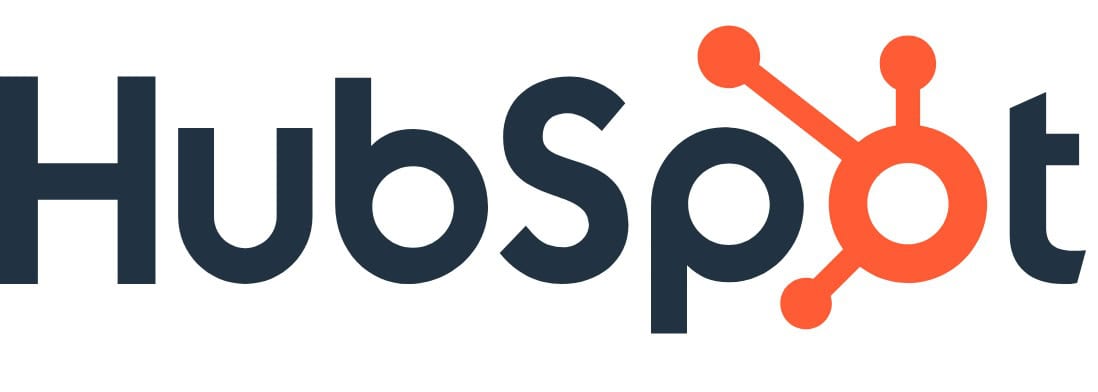The post Managed IT Services: Australia’s Growing Digital Backbone appeared first on TheAussieway.
]]> The managed IT services Australia market is experiencing unprecedented growth, with anestimated annual expansion rate of 9.2%, projected to reach a staggering $44.3 billion by 2025. As businesses increasingly rely on digital transformation to stay competitive, IT strategies are evolving at a rapid pace. This shift is driving a surge in demand for managed service providers (MSPs), who offer comprehensive solutions to streamline operations, enhance cybersecurity, and optimise cloud infrastructure.
The managed IT services Australia market is experiencing unprecedented growth, with anestimated annual expansion rate of 9.2%, projected to reach a staggering $44.3 billion by 2025. As businesses increasingly rely on digital transformation to stay competitive, IT strategies are evolving at a rapid pace. This shift is driving a surge in demand for managed service providers (MSPs), who offer comprehensive solutions to streamline operations, enhance cybersecurity, and optimise cloud infrastructure.
Organizations of all sizes are recognizing the benefits of outsourcing IT services, particularly in an era where technology is a fundamental pillar of business success. From small startups to large enterprises, companies are embracing managed IT services to gain access to specialized expertise, reduce operational costs, and ensure round-the-clock IT support. As businesses grow more reliant on technology-driven solutions, the need for robust and scalable IT frameworks becomes even more essential. This shift is driving a surge in demand for managed service providers (MSPs), who offer comprehensive solutions to streamline operations, enhance cybersecurity, and optimise cloud infrastructure.
A Shift Toward Outsourcing

One of the most significant IT outsourcing trends in recent years is the growing preference for businesses to delegate their IT needs to specialized MSPs. This transition allows organizations to focus on core operations while leveraging the expertise of third-party providers for IT maintenance, cloud management, and cybersecurity. Australia and New Zealand together host approximately 1,300 MSPs, playing a crucial role in supporting businesses across various industries. These providers contribute to the regional economy by fostering innovation, creating jobs, and enhancing overall digital resilience.
Key Drivers of Growth
Increasing Demand for Cloud Solutions
The rise of cloud computing services is a major force behind the expansion of managed IT services. Businesses are increasingly migrating to cloud-based infrastructure to benefit from scalability, cost savings, and operational flexibility. With the surge in remote work and digital collaboration, cloud solutions provide companies with secure and efficient platforms to store and manage data. MSPs are at the forefront of this transformation, offering businesses tailored cloud strategies that enhance performance and security.
Heightened Focus on Cybersecurity
The importance of cybersecurity in managed IT has never been more critical, with cyber threats becoming increasingly sophisticated. Businesses in Australia face growing risks from cyberattacks, data breaches, and ransomware incidents. Managed IT service providers offer proactive security measures, including continuous monitoring, threat detection, and compliance support. By integrating advanced security frameworks, MSPs help organizations mitigate risks and safeguard sensitive information.
Cost Efficiency and Operational Flexibility
Businesses are always looking for cost-effective ways to enhance productivity, and outsourcing IT services provides a practical solution. The Australia IT solutions landscape has evolved to include pay-as-you-go models, allowing organizations to scale their IT operations based on demand. Instead of investing in expensive in-house IT teams, companies can rely on MSPs for specialized services, ensuring maximum efficiency and reduced overhead costs.
Growing Need for IT Support and Maintenance
As businesses expand their digital footprint, the need for reliable IT support Australia has intensified. Downtime and technical issues can severely impact productivity and revenue. MSPs offer 24/7 monitoring, remote troubleshooting, and on-site assistance, ensuring minimal disruption to business operations. This continuous support structure enables companies to operate efficiently while focusing on growth and innovation.
Increasing Adoption of Cloud Services

Cloud computing has revolutionized technology solutions for susinesses, offering flexibility, scalability, and cost-efficiency. Companies can scale their IT resources up or down based on demand, eliminating the need for expensive on-premise hardware. MSPs play a crucial role in cloud migration and management by ensuring seamless transitions, optimizing performance, and providing secure data storage solutions. As more companies shift to the cloud, managed IT providers continue to refine their offerings to meet evolving business needs.
Managed service providers (MSPs) offer end-to-end IT infrastructure management, ensuring businesses can seamlessly adopt and manage cloud technologies. These providers assist with cloud security, backup and disaster recovery, and hybrid cloud implementations, allowing companies to leverage the best of both private and public cloud environments. With increasing competition and customer demand for faster services, cloud adoption is becoming a necessity for Australian businesses seeking innovation and efficiency.
Rising Cybersecurity Concerns
With cyberattacks growing in sophistication, businesses must prioritize security to protect their data and infrastructure. Robust IT Infrastructure Management is critical in mitigating risks associated with data breaches, ransomware, and other cyber threats. MSPs deliver comprehensive cybersecurity solutions, including vulnerability assessments, threat detection, and incident response strategies. By implementing proactive security measures, managed IT providers help organizations safeguard their digital assets and maintain regulatory compliance.
The increasing frequency of cyber threats highlights the need for Australia business IT services that focus on cybersecurity. MSPs assist businesses in implementing multi-layered security frameworks, ensuring compliance with Australia’s stringent data protection laws. Services such as Security Information and Event Management (SIEM), endpoint protection, and zero-trust security models help businesses mitigate cyber risks and maintain a secure IT environment.
Focus on Digital Transformation
Digital transformation is a key driver of managed IT growth, enabling businesses to enhance efficiency, improve customer experiences, and stay competitive. MSPs facilitate this transformation by integrating emerging technologies such as artificial intelligence, automation, and the Internet of Things (IoT). By leveraging these innovations, companies can streamline operations and drive long-term success in an increasingly digital world.
Many businesses are shifting towards IT modernization strategies that incorporate intelligent automation, predictive analytics, and remote working solutions. MSPs support organizations in making this transition by providing remote IT support, ensuring seamless connectivity, troubleshooting, and maintenance. This enables businesses to focus on their core functions while leaving IT management to expert professionals.
Compliance with Regulations
Navigating Australia’s regulatory landscape can be complex, with strict data protection and privacy laws in place. Businesses must adhere to compliance frameworks to avoid penalties and reputational damage. MSPs assist in this process by ensuring organizations remain compliant with evolving regulations, implementing secure data management practices, and conducting regular audits. By providing expert guidance, managed IT providers help businesses operate with confidence in a highly regulated environment.
In industries such as finance, healthcare, and government, data protection and compliance are crucial. MSPs ensure that businesses adhere to legal frameworks such as the Australian Privacy Act, Essential Eight cybersecurity guidelines, and ISO 27001 certification requirements. Through regular security assessments and policy enforcement, managed service providers help companies maintain compliance while minimizing risks associated with non-compliance.
The Role of Top Managed IT Service Providers
The Australian market is home to some of the most innovative managed IT service providers, offering specialized solutions tailored to different business needs. The top 50 MSPs in Australia excel in areas such as remote IT support, cybersecurity, cloud management, and IT infrastructure optimization. Their expertise allows businesses to enhance efficiency, reduce downtime, and improve overall IT performance.
Here are some of the leading MSPs in Australia:
- First Focus – Offers comprehensive IT solutions, including cloud, security, and networking services.
- Centorrino Technologies – Specializes in managed security and IT support services.
- ADITS – Recognized for customer-centric IT solutions and consulting.
- ONGC Systems – Delivers cloud migration and cybersecurity services.
- Command IT Services – Provides scalable managed IT solutions for small and medium businesses.
- Brennan IT – Focuses on enterprise IT management and digital transformation.
- CT4 – Specializes in cloud computing and data management.
- eStorm Australia – Offers IT strategy consulting and cybersecurity solutions.
- Powernet IT Solutions – Provides IT support and infrastructure management services.
- Fujitsu Australia – A leading provider of end-to-end IT solutions and infrastructure.
For the full list of the top 50 managed service providers in Australia, businesses can refer to industry rankings provided by platforms like Cloudtango and MSP Pie.
Engaging with these top MSPs ensures that businesses have access to cutting-edge Australia business IT services, helping them remain competitive, secure, and future-ready in an ever-evolving digital landscape.
Trends in Service Diversification and Customer Experience
1. Service Diversification
The landscape of IT outsourcing trends continues to evolve as MSPs expand their service portfolios. Traditionally focused on IT infrastructure management, many providers are now incorporating IT consulting, cloud services, and project management into their offerings. This diversification allows businesses to access comprehensive Australia IT solutions under a single umbrella, streamlining their digital operations and ensuring seamless integration of new technologies.
2. Customer Experience
Delivering an exceptional customer experience is becoming a priority for MSPs. Companies seek responsive and personalized IT services for SMEs, ensuring that businesses of all sizes receive tailored support. Managed IT providers are investing in user-friendly platforms, real-time assistance, and proactive maintenance to meet modern expectations. By focusing on customer-centric strategies, MSPs enhance client satisfaction, build trust, and strengthen long-term partnerships.
3. Transition to Cloud Service Providers
As cloud adoption accelerates, MSPs are shifting their focus from hardware procurement to cloud service management. Organizations are increasingly leveraging digital business strategy to enhance agility and scalability. Managed IT providers play a vital role in this transition, helping businesses migrate workloads, optimize cloud environments, and ensure data security in multi-cloud infrastructures. This shift enables companies to achieve operational efficiencies while reducing capital expenditures on legacy systems.
Future Prospects for MSPs in Australia
The MSP sector in Australia is poised for significant growth, driven by increasing demand for outsourced IT solutions, cloud services, and cybersecurity expertise. As more businesses adopt digital-first approaches, the need for reliable and innovative IT partners will continue to rise.
For companies navigating IT outsourcing trends, the key to success lies in adaptability. By forming strong partnerships with MSPs, businesses can leverage cutting-edge technology, optimize costs, and enhance operational resilience. Whether through remote IT support, cloud optimization, or cybersecurity strategies, MSPs are set to play an integral role in shaping Australia’s digital economy.
Moreover, the importance of IT services for SMEs cannot be overstated. Smaller enterprises, which often lack dedicated IT departments, rely on MSPs to provide enterprise-level expertise without the associated costs. By offering tailored solutions that address the unique challenges of SMEs, MSPs contribute to a more competitive and technologically advanced business landscape.
Conclusion
The demand for managed IT services is set to continue its upward trajectory, driven by advancements in cloud computing, heightened cybersecurity requirements, and the ongoing digital transformation. As organizations seek reliable IT support Australia, they turn to managed service providers to enhance security, optimize infrastructure, and drive business growth. With a strong network of MSPs offering innovative solutions, Australia’s digital landscape is poised for a future of sustained technological evolution and economic success.
The post Managed IT Services: Australia’s Growing Digital Backbone appeared first on TheAussieway.
]]>The post Infosys and Tennis Australia Unveil Groundbreaking Generative AI Innovations at Australian Open 2025 appeared first on TheAussieway.
]]>
Why This Partnership Matters:
- Infosys: A global leader in next-generation digital services and consulting, Infosys brings its expertise in AI and analytics to revolutionize how sports are experienced and managed.
- Tennis Australia: As the governing body for tennis in Australia, it continues to embrace technology to enhance the sport’s appeal and accessibility.
Revolutionizing Fan Engagement with AI

At the heart of the Australian Open 2025 is the transformative use of AI in sports to create a more immersive and personalized experience for fans. Craig Tiley, CEO of Tennis Australia and AO Tournament Director, reaffirms this sentiment, saying, “For the past six years, Infosys has helped Tennis Australia to raise the bar and serve up new experiences for fans using digital technologies. We’re excited to see the leaps being made with AI at AO 2024.”
Through generative AI, audiences can now enjoy tailored content, such as customized match highlights, real-time statistics, and interactive digital experiences. For instance, fans can access live updates and analyses on their favourite players through AI-driven platforms, creating a deeper connection with the sport.
In addition, AI in sports events has revolutionized player performance analysis. Generative AI processes vast amounts of match data to deliver actionable insights, such as shot accuracy, opponent weaknesses, and match strategies. These tools empower players to refine their techniques and adapt dynamically to the competition.
Operational efficiency has also seen remarkable advancements. AI optimizes tournament logistics, from scheduling matches to managing resources, ensuring a seamless experience for participants and organizers alike. These innovations demonstrate the multifaceted applications of AI in modern sports events.
Enhancing the Broadcast Experience with AI-Powered Content

Broadcasting the Australian Open has never been more dynamic, thanks to generative AI’s capabilities. AI-powered tools now enhance video and audio quality in real time, providing viewers with an unparalleled viewing experience. Advanced Australian openai applications such as subtitle generation, multilingual dubbing, and accessibility enhancements ensure that the tournament reaches a global audience without barriers.
Imagine watching a live match with AI-generated subtitles in multiple languages or enjoying commentary tailored to your preferences. These technologies not only enhance inclusivity but also set a new standard for AI in sports broadcasting. For example, the AI Shot of the Day feature helps AO’s media team meet growing digital content demands The future of AI-powered broadcasting promises even greater innovations, offering a more connected and enriched experience for fans worldwide.
AI-Driven Player Insights and Training Tools

Image Credit: https://medium.com/@mygreatlearning/how-is-ai-used-in-sports-cdfbdd97ad82
Generative AI is reshaping the way athletes train and compete. At the Australian Open 2025, players are benefiting from advanced AI-driven tools that provide in-depth analyses of their performance. From tracking player movements to monitoring fatigue levels, Australian openai prediction offers comprehensive insights that were previously unattainable.
For example, AI-powered wearables and fitness apps are revolutionizing training regimens. These tools monitor metrics like heart rate, agility, and endurance, enabling coaches to design personalized training plans. Players can now focus on their specific strengths and address weaknesses, leading to improved strategies and better overall performance. Whether it’s fine-tuning a serve or enhancing on-court agility, AI is becoming an indispensable part of player development.
Streamlining Operations and Enhancing Sustainability

Image Credit: https://technorely.com/insights/streamlining-operations-and-process-optimization-for-business-success
Beyond fan and player experiences, the Australian Open 2025 is leveraging sustainable tournament operations powered by AI. By automating processes like ticketing, scheduling, and crowd management, AI ensures that the event runs smoothly and efficiently. This reduces wait times, enhances spectator satisfaction, and optimizes resource allocation. The Infosys Fan Zone at Melbourne Park remains climate active, with its carbon footprint fully offset and structures fully recyclable. Infosys and Tennis Australia are also advancing the Future Leaders Program powered by Infosys Springboard, the company’s digital learning and collaboration platform for the community, which provides participants with the opportunity to learn transferrable skills in areas such as inclusion, leadership, technology, and design thinking.
Sustainability is another critical focus area. AI monitors and minimizes energy consumption in sports venues through smart lighting systems and climate control technologies. For instance, smart algorithms adjust lighting based on real-time needs, significantly reducing electricity usage. Similarly, climate control systems powered by AI maintain optimal conditions with minimal environmental impact. These measures underline the role of AI in promoting greener and more responsible sports events.
Looking Toward the Future of AI in Sports

The innovations showcased at the Australian Open 2025 are just the beginning of a broader transformation across the sports industry. The integration of AI in sports events has the potential to redefine how tournaments are organized, experienced, and remembered. Similar advancements are being explored in other sports, such as football and basketball, where AI is used for player tracking, injury prevention, and fan engagement.
The ripple effects of these technologies extend far beyond tennis. By setting a precedent for AI adoption, the Australian Open is inspiring other tournaments to embrace similar innovations. This shift signifies a future where AI becomes an integral part of the global sports ecosystem, driving progress and enhancing experiences for all stakeholders.
The partnership between Infosys and Tennis Australia at the Australian Open 2025 marks a groundbreaking moment in sports technology. By incorporating generative AI, the tournament is transforming fan engagement, player performance analysis, and operational efficiency. From personalized fan experiences to AI-driven sustainability measures, these innovations set a new benchmark for the role of AI in sports.
As a pioneer in adopting advanced technologies, the Australian Open continues to lead the way in sports innovation. The fusion of tradition and technology ensures that this iconic tournament remains at the forefront of global sporting events. With generative AI at its core, the Australian Open 2025 is not just a celebration of tennis but also a testament to the limitless possibilities of AI in shaping the future of sports.
The post Infosys and Tennis Australia Unveil Groundbreaking Generative AI Innovations at Australian Open 2025 appeared first on TheAussieway.
]]>The post Top MarTech Tools Reshaping the Marketing Landscape for Australian SMEs appeared first on TheAussieway.
]]>
What Is a MarTech Stack?
A MarTech stack is a set of tools and applications that implement, control, integrate, and monitor marketing operations and processes. Stacks can include COTS apps and/or homegrown app that could be basic to highly intricate. In more extensive organizations, it is normal to have over 100 applications in their MarTech stack.
Understanding MarTech Tools and Their Role in Business
MarTech tools include platforms that assist in customer relationship management (CRM), marketing automation, analytics, social media management, and content creation. By integrating MarTech into their operations, businesses can enhance efficiency, reduce manual tasks, and derive actionable insights to inform strategic decisions.
The primary benefits of MarTech tools include:
- Enhanced Customer Engagement: Customized and analytic advertising targeted at customers segments.
- Increased Efficiency: Email marketing and social media management as tasks that can be simplified to enhance productivity by automating them.
- Data Analytics and Insights: Campaign tracking in real time, thus allowing for changes to be made more quickly and increased return on investment.
- Improved Team Collaboration: Centralised tools also mean that teams are aligned correctly, with easy cross-over and a smooth exchange of knowledge and KPIs.
Popular Martech Applications
Among the myriad tools in use, several categories stand out for their widespread adoption:
- Marketing Automation: Saves time on menial marketing tasks so that more effective multi-channel marketing communication can be achieved. It addresses practices such as marketing operation definition, marketing operation calendar, marketing operation segmentation, as well as marketing operation tracking to assist firms in selling to leads by providing relevant content.
- Customer Data Platforms (CDPs): These platforms gather data from all sources of customers and create integrated profiles that can be passed around within systems to create a single and continuous source of customer information.
- Customer Journey Analytics and Orchestration: These tools help marketers to collect data at the points of contact; it helps to understand the behaviour of the customer at every stage and improves the marketing efforts.
The Growing Adoption of MarTech Among Australian SMEs
Australian SMEs have embraced top martech tools as they look to stay competitive in an increasingly digital market. According to recent industry reports, the number of MarTech applications has grown rapidly. The Marketing Technology Landscape, published by chiefmartec.com, listed over 14,000 MarTech applications in 49 categories as of 2024—a 9,295% increase over 13 years since its initial 2011 publication that featured just 150 solutions.
This fast growth proves the growing reliance on MarTech as companies face the necessity of constant customer connection in an unstable digital environment and the desire for affordable yet highly profitable solutions. One of the primary concerns for small and medium enterprises in Australia is the issue of cost and proportionality, which is why tools that can provide a choice of options, that they can decide to fit the needs of their businesses best are especially popular.
Top Affordable and Impactful MarTech Tools for Australian SMEs
The following are some of the most impactful MarTech tools suited for Australian SMEs, each catering to different aspects of marketing:
1. HubSpot
 Use Case: Comprehensive CRM and marketing automation.
Use Case: Comprehensive CRM and marketing automation.
Benefits: HubSpot has a familiar look and feel and offers email marketing capabilities, lead management, and analytics built-in. One of the key reasons why more and more companies are using it is the availability of the free version of CRM.
2. Canva
Use Case: Information design, graphic design, and content creation.
Benefits: Canva is an Australian tool that enables SMEs to produce professional designs regardless of their lack of professional training in design. The cost-effective hourly rate of the platform and the templates simplify the creation of effective marketing content.
3. Mailchimp

Use Case: Email marketing and automation.
Benefits: While offering a rich array of capabilities for e-mail automation, targeting and analysis, Mailchimp is still a preferred platform for SMEs. It is affordable and has a business model that is friendly to businesses, especially in that it adapts to businesses’ evolving needs without necessarily having to sink large amounts of money into them at first.
4. SEMrush

Use Case: SEO and competitive analysis.
Benefits: SEMrush has features in keyword research, backlink analysis and competition analysis which makes it easier for businesses to remain relevant in the search process.
5. Hootsuite

Use Case: Social media management.
Benefits: With Hootsuite, SMEs can engage with customers across multiple social media platforms all at one place. Some of the options which make it very useful include scheduling of posts, performance tracking as well as team work.
Emerging Trends in MarTech Adoption in Australia
Australian businesses are increasingly looking toward advanced Martech applications powered by AI and machine learning. These technologies enhance personalization, improve customer journey mapping, and automate complex marketing tasks. Below, we explore the key trends expected to influence the future of MarTech for SMEs:
1. Artificial Intelligence and Machine Learning
AI-driven tools are no longer limited to large enterprises. SMEs are beginning to leverage AI for predictive analytics, chatbots, and personalized content recommendations. Machine learning algorithms analyze customer data to predict behaviour, helping craft highly targeted campaigns.
2. Marketing Automation
The use of marketing automation tools is set to grow, allowing businesses to automate processes such as customer segmentation, lead nurturing, and multi-channel campaigns. This enables SMEs to achieve a higher level of efficiency without expanding their workforce.
3. Enhanced Data Privacy Solutions
With data privacy becoming a major concern, Australian SMEs are adopting MarTech solutions that prioritize compliance with data protection laws. Tools that integrate advanced encryption and user consent management are becoming standard as customers demand transparency.
Present and Future Use Cases in Australia
A survey reveals that about 65% of the SMEs in Australia have adopted some level of automation in their marketing mix and the key benefits sought include better lead acquisition and customer loyalty. AI solutions are yet to grow in this sector but are expected to register a 20% increase in use by SMEs in the next three years.
A graphical representation of MarTech tool adoption indicates a steady rise:
| Year | Percentage of SMEs Using MarTech |
| 2021 | 52% |
| 2022 | 60% |
| 2023 | 65% |
| 2024 | 72% |
| 2026 (Projected) | 80% |
Is a Career in Martech Worth Pursuing?
People working in Martech usually operate complex workflows that involve both IT skills and marketing savvy. The role, however, can be financially rewarding if one considers the centrality of martech in determining the effectiveness of marketing software. Such responsibilities may encompass the choice of tools, the implementation of systems as well as the utilization of data for strategic marketing.
Final Thoughts
For Australian SMEs, investing in top MarTech tools is no longer optional but essential for sustaining growth in a competitive digital market. The positive consequences of applying cheap and effective tools like HubSpot, Canva, and Mailchimp consist in the higher level of effectiveness, increased quality of customer communication, as well as the possibility to track the effectiveness of campaigns. As the world advances in technology, SMEs that embrace smart manufacturing through artificial intelligence and automation will be in a good place in the future market.
The post Top MarTech Tools Reshaping the Marketing Landscape for Australian SMEs appeared first on TheAussieway.
]]>